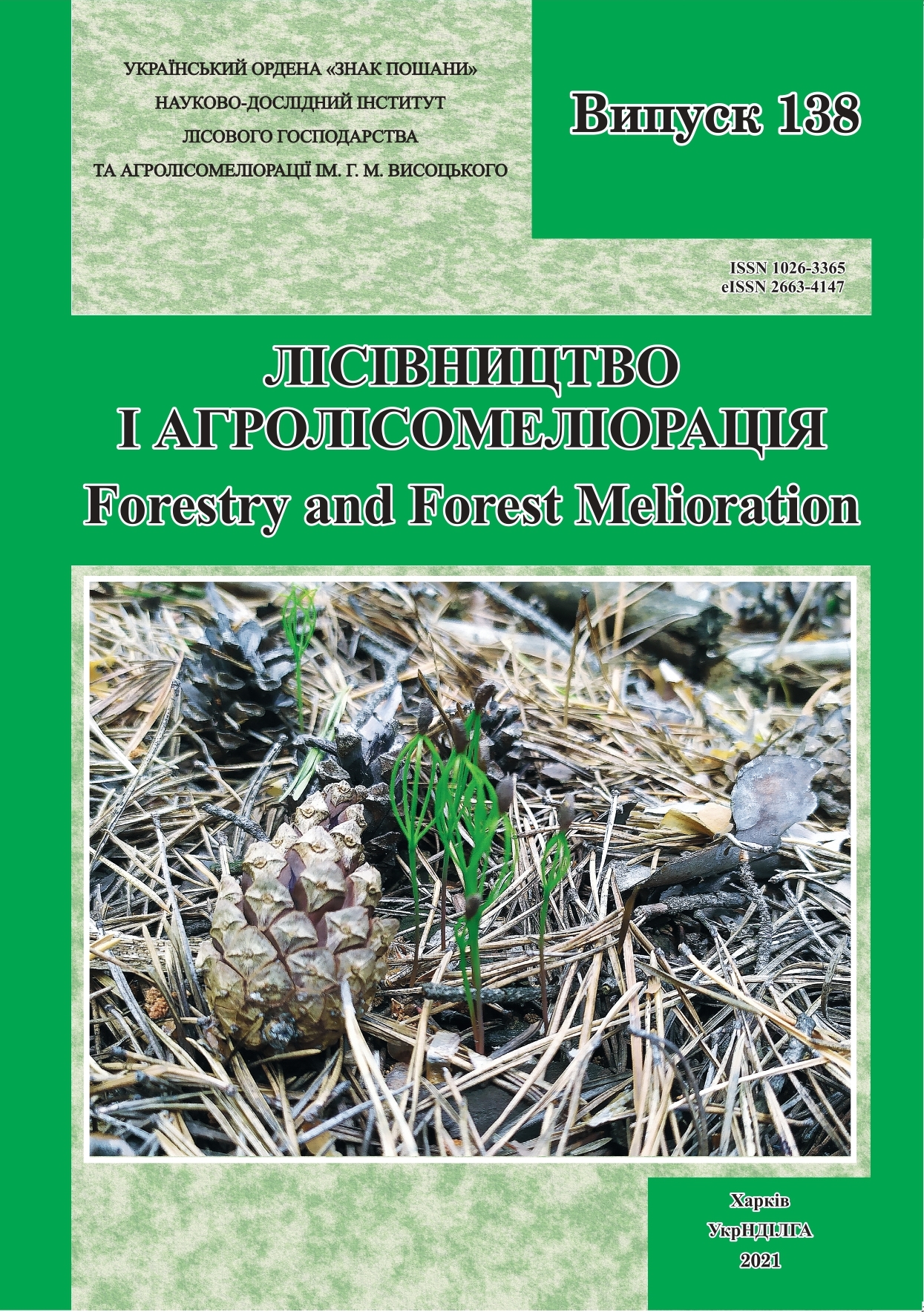Abstract
Introduction
The paper analyses a differentiated conservation strategy for populations of forest flora rare species in Ukraine and their localities based on the study of their ecological and phytocoenotic features and causes of rarity, monitoring of the abundance and distribution within certain regions. Rare component of forest phytodiversity in Polissya forestry region has 66 species (61 species of the national and 8 species of the international conservation status) and is distributed rather equally between forestry districts.
The aim of the study was to assess the status of populations and analyse the distribution of rare plant species in the forest phytocoenoses of the West and Central Polissya forestry districts to determine the protection activities based on forest monitoring.
Materials and Methods
The subject of the research was first-level monitoring plots (280 plots) located within the West and Central district of Polissya Forestry Region in Ukraine. To determine the location of the forestlands according to forest zoning, forest types, and types of forest stands, we used the guidelines for forest monitoring. The geobotanical description included species of trees, shrubs and herbaceous plants which were estimated on their abundance-coverage (%) according to the combined scale of G. M. Vysotsky and D. V. Vorobyov. Rare plant species which are the subject of special conservation within the territory of both Ukraine and Europe were identified according to IUCN lists, Bern Convention Annexes, the European Red List, the Red Book of Ukraine, and Ukrainian Regional Red Lists. The category of occurrence of rare species was determined, the development of their populations was assessed by the degree of abundance-projective coverage and confined to certain types of forests and tree stands in order to monitor their spread rate and development pattern within the administrative regions and Polissya forestry region.
Results
Forest vegetation on forest monitoring plots within the West and Central Polissya forestry district is notable for the forest typological diversity and is represented by 23 forest types. The main forest types are wet oak-pine fairly infertile forest type (28.2% of plots), fresh oak-pine fairly infertile forest type (19.3%) and fresh pine infertile forest type (10.4%). The forest flora is represented by 24 species of tree-shrub and 198 species of shrub-grass-moss layers (222 species in total); its rarity constituent includes mainly herbaceous plants, seven species with the national and 17 species with the regional conservation status.
Populations of rare species within the studied area mostly occur very rarely (1–3 localities) or rarely (4–6 localities) with law indicators of abundance-coverage (5–10%, three species up to 25%). The reasons for the rareness of most species are the interrelated effects of natural rarity, negative natural factors, and anthropogenic impact. Thus, seven species with the regional conservation status have become secondarily rare due to anthropogenic impact. Sporadic occurrence within two administrative regions (7–10 localities) with the abundance-coverage up to 50% is the basis for revision (cancellation) of the regional conservation status of Carex limosa L.
Conclusions
Conservation measures for the regionally rare forest flora include a regular monitoring (every five years), allocation of particularly protected forest plots or high conservation forest areas (HCVA 1) during FSC certification of forestry enterprises within the areas with viable populations of rare species as well as a revision of regional conservation status for some species.

This work is licensed under a Creative Commons Attribution 4.0 International License.
